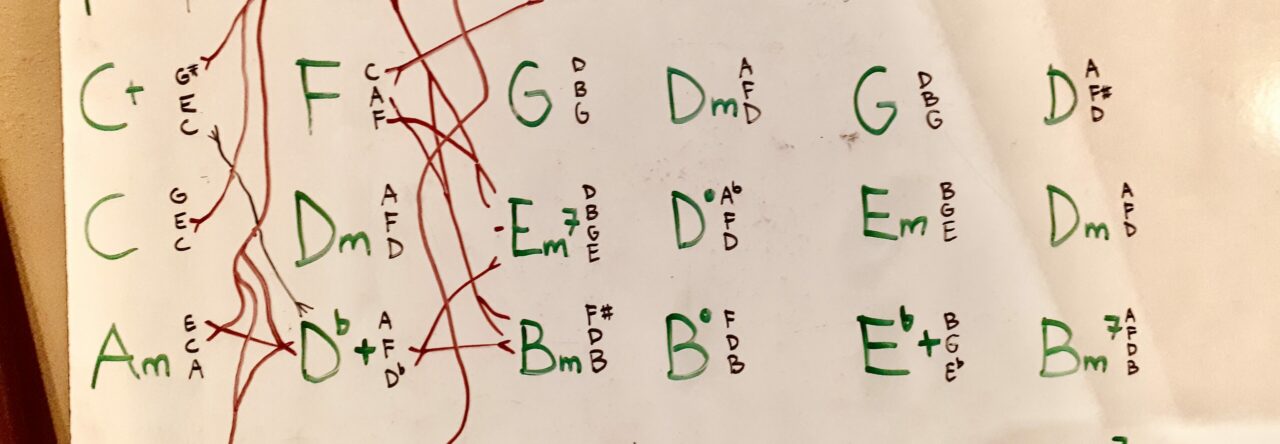Instructional videos, experimenting with added notes (as found in 7th, 6th, Sus 2, and Sus 4 chords), collaboration, and individual creative alterations.
Age Range: 14 (Grade 9) and up.
Learning Activity Number: 4.
Learning Objectives: Students will be become familiar with 7th, 6th, Sus 2, and Sus 4 chords, and gain a theoretical and a felt understanding of how they “work” in songs. Students will be able to incorporate these chords into chord progressions, collaborate in composition, and make and justify individual improvements to existing progressions.
Universal Design for Learning Principles: Instructional materials are audio-visual, with captions, different playback speeds, and infinite repetition available to all learners. Specialized terms are explained.
Resources/Materials: Students will need the following:
- internet access to view the study materials on YouTube, make their online submissions, and communicate with peers,
- access to their chordal instrument and some privacy for figuring out and playing songs,
- basic video recording and processing capabilities to share the results of their work,
- to have formed a small group with classmates, and
- to have accessed the section of the course discussion forum accessible only to groupmates and the instructor.
Learning Activity Outline
Introduction:
Instructional Content:
Activity: View and, as needed for understanding, review (at your own preferred speed, and with subtitles if desired) the above 4 instructional videos. Experiment with 7th, 6th, Sus 2, and Sus 4 chords yourself, then work in your groups to collectively compose an interesting chord progression that all members like, and submit it as a group. Then, individually make a video showing what you like about the progression and how you might improve upon it in at least two ways, providing explanations and justifications for each change made.
Assessment: Students will receive both a shared mark for their group’s submission (given full marks if it meets basic criteria above) and an individual mark for the compositional understanding and ability they demonstrate in their individual submissions.
